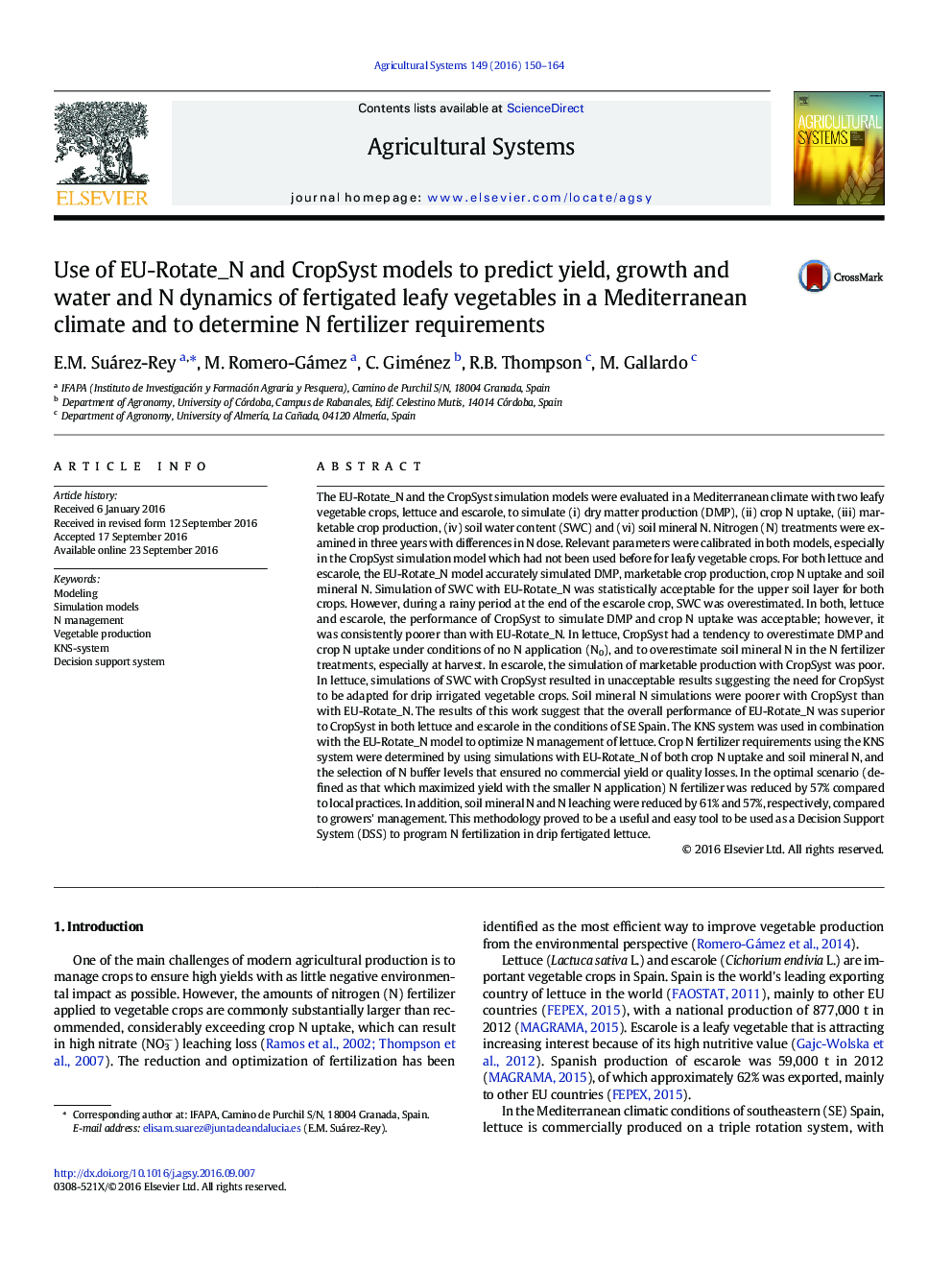| Article ID | Journal | Published Year | Pages | File Type |
|---|---|---|---|---|
| 6368258 | Agricultural Systems | 2016 | 15 Pages |
Abstract
The EU-Rotate_N and the CropSyst simulation models were evaluated in a Mediterranean climate with two leafy vegetable crops, lettuce and escarole, to simulate (i) dry matter production (DMP), (ii) crop N uptake, (iii) marketable crop production, (iv) soil water content (SWC) and (vi) soil mineral N. Nitrogen (N) treatments were examined in three years with differences in N dose. Relevant parameters were calibrated in both models, especially in the CropSyst simulation model which had not been used before for leafy vegetable crops. For both lettuce and escarole, the EU-Rotate_N model accurately simulated DMP, marketable crop production, crop N uptake and soil mineral N. Simulation of SWC with EU-Rotate_N was statistically acceptable for the upper soil layer for both crops. However, during a rainy period at the end of the escarole crop, SWC was overestimated. In both, lettuce and escarole, the performance of CropSyst to simulate DMP and crop N uptake was acceptable; however, it was consistently poorer than with EU-Rotate_N. In lettuce, CropSyst had a tendency to overestimate DMP and crop N uptake under conditions of no N application (N0), and to overestimate soil mineral N in the N fertilizer treatments, especially at harvest. In escarole, the simulation of marketable production with CropSyst was poor. In lettuce, simulations of SWC with CropSyst resulted in unacceptable results suggesting the need for CropSyst to be adapted for drip irrigated vegetable crops. Soil mineral N simulations were poorer with CropSyst than with EU-Rotate_N. The results of this work suggest that the overall performance of EU-Rotate_N was superior to CropSyst in both lettuce and escarole in the conditions of SE Spain. The KNS system was used in combination with the EU-Rotate_N model to optimize N management of lettuce. Crop N fertilizer requirements using the KNS system were determined by using simulations with EU-Rotate_N of both crop N uptake and soil mineral N, and the selection of N buffer levels that ensured no commercial yield or quality losses. In the optimal scenario (defined as that which maximized yield with the smaller N application) N fertilizer was reduced by 57% compared to local practices. In addition, soil mineral N and N leaching were reduced by 61% and 57%, respectively, compared to growers' management. This methodology proved to be a useful and easy tool to be used as a Decision Support System (DSS) to program N fertilization in drip fertigated lettuce.
Related Topics
Life Sciences
Agricultural and Biological Sciences
Agricultural and Biological Sciences (General)
Authors
E.M. Suárez-Rey, M. Romero-Gámez, C. Giménez, R.B. Thompson, M. Gallardo,
